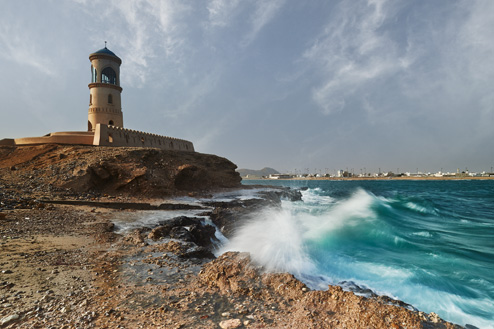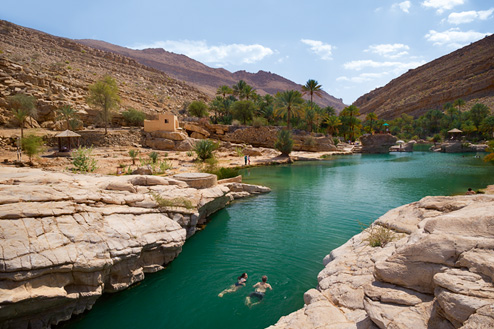Sharjah
Sharjah is built around Khalid Lagoon, also known as the creek, and the surrounding Buheirah Corniche is a popular spot for an evening stroll. From various points around the lagoon, small dhows can be hired to take you out on the water to see the city lights. Joining Khalid Lagoon to Al Khan Lagoon, Al Qasba is home to a variety of cultural events, exhibitions, theatre and music – all held on the canal-side walkways or at dedicated venues. The city’s main cultural centres, The Heritage Area and The Arts Area, are two of the most impressive collections of museums and heritage sites in the region. The ruling Al Qassimi family are renowned collectors of historical artefacts and art, and in an emirate known for its conservatism, many of the works held within the Arts Area are surprising in their modernity. Sharjah’s cultural worth is so great that visitors should avoid trying to absorb it all in one trip.
Shoppers will have a blast too, searching for gifts in Sharjah’s souks. Souk Al Arsah is the oldest souk in the emirate, while the Central Souk is known for its well-respected upstairs carpet shops. There’s also high-street shopping at Sharjah Mega Mall (sharjahmegamall.com, 06 574 2574) for days when culture and curiosities aren’t on the agenda.
For further information on Sharjah, check out the Sharjah Mini Visitors’ Guide, available in bookstores and at askexplorer.com.













